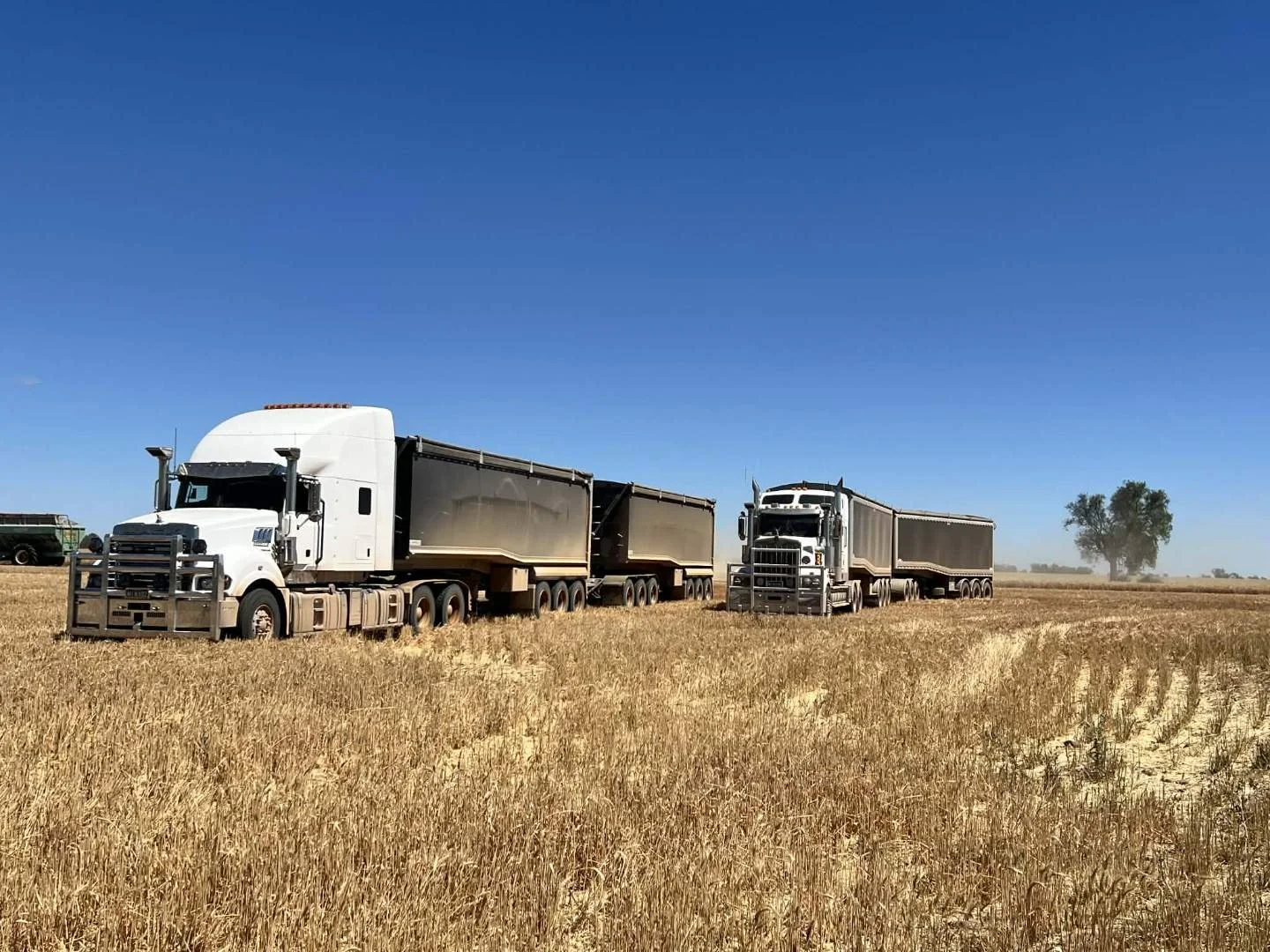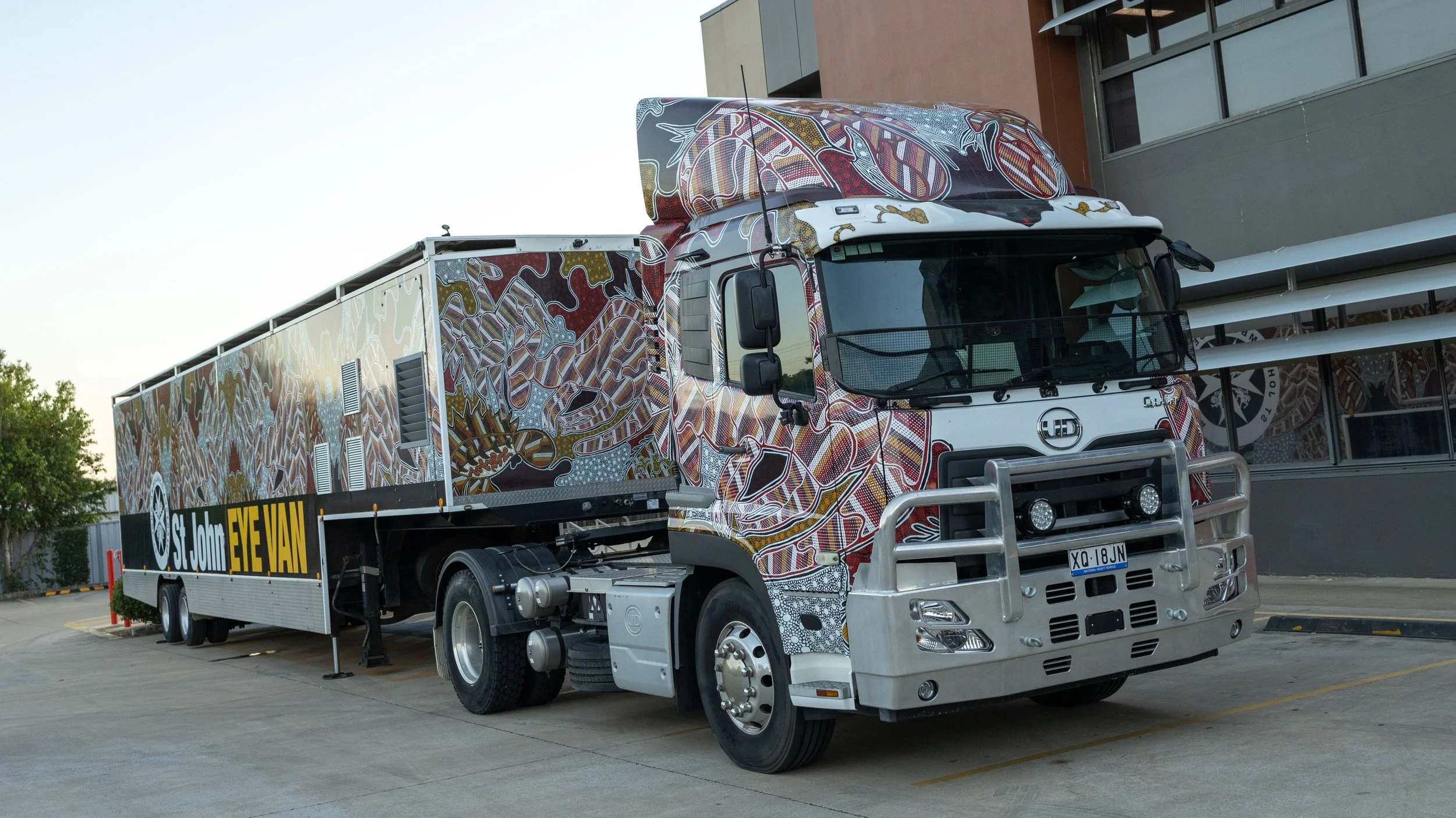Scania ‘Super’… Def Hi-Octane
Scania have released their new ‘Super’ range of trucks here in Oz and invited me to take a couple of them for a spin from Melbourne to Bendigo and back to get a feel for their ‘latest and greatest’ - their words, not mine.
The two trucks in question were the 460P (Hp) as a single and the 560R (Hp) in B double guise. These trucks twist 2500 and 2800Nm respectively. Now for the surprise: They are putting out these figures from a 12.74 litre motor.
To put this into perspective I had a gander at other 13 litre truck engines available on the market
Hino 700 Series 480Hp / 2157Nm
M-B Actros 520Hp / 2500Nm
Paccar MX13 510Hp / 2508Nm
Volvo D13 500Hp / 2508Nm
Scania Super 460P 460Hp / 2500Nm
Scania Super 560R 560Hp / 2800Nm
(The P and R denote Cab variants)
That is quite frankly, HUGE!
Even the 460 version of the Scania is twisting 2500Nm – equal to the best of the competition. There are also 420 and 500Hp versions available so Scania is covering most applications.
Scania’s various outputs
These engines are 75Kg lighter than their predecessors and are mated to (an also new) 14 speed Opticruise gearbox – also some 70-75 kilos lighter, being smaller, cased in aluminium and doing away with an internal reverse gear. More on that later.
Scania have crossed the 50% thermal efficiency barrier for the first time – something no-one outside of Formula 1 has done. Thermal efficiency is amount of power produced by an engine that is left to actually drive the thing – the rest disappearing in neat and noise. Surprised? So was I.
To put this into perspective the car industry gets excited when they’re in the high 40’s.The average for the diesel truck industry is 30-40%. So for Scania the result is that more power is available to drive the wheels instead of disappearing in that heat and noise. Pretty impressive stuff.
They’ve done it without reinventing the wheel – or in this case the internal combustion engine. Scania’s Ben Nye: ““It’s basic engine design. We don’t have a variable geometry turbocharger we don’t have EGR. We clean up our emissions with AdBlue only, using our Twin-SCR system where we inject the AdBlue just after the turbocharger where the gases are at their hottest and most turbulent instead of the muffler. So therefore the AdBlue atomises correctly in the gases. Basically it does a bit of a sniff test and if it needs more it will do a second dose in the muffler. But we find the majority of it is done first up.”
Scania tell me that this new engine’s technical life length has increased by 30% compared to previous iterations, and for good measure the maintenance intervals have been extended.
Back to that gearbox without reverse. It is an all-new Opticruise with 14 forward gears including crawler and overdrive gears and the method of oil delivery has been changed which results in a lot less inertia.
Then there’s two really big changes: Firstly there’s no synchromesh. This is effectively an automatic Road Ranger. So how does it change gears without graunching them? There’s electronics within the gearbox and the engine to make sure the revs are matched. There’s also three countershaft brakes in the gearbox to slow down the appropriate shaft to match it to other shaft speeds for seamless meshing.
Secondly this gearbox is missing that reverse gear! “What the actual f***?” said I. Scania came up with the really simple solution of locking up the planetary gears at the back of the gearbox so it actually puts the whole gearbox in reverse. Theoretically this could give you 14 reverse gears, like those (mythical) WW2 Italian tanks. Obviously Scania have restricted it ‘cos who needs OD in reverse. So the gearbox is shorter, lighter and since 2016 Scania have reduced change times by 115%.
Scania matched the all new drive train at the back end with final drives which are now taller, resulting with the engine working at lower revs. At 100 km/h the engine is ticking over at just over 1100 rpm in overdrive. To compensate for the tall final drives the lower gears are spaced relatively closely together to avoid any judder when moving off the mark.
The end result is an 8% improvement in fuel consumption. Ben Nye says he has seen up to 14%. That’s massive but 8% is a safe number so Scania has gone safe.
Same size tank, more useable fuel
There is plenty more in the Super Scania’s, such as improved retarder performance which can give a maximum brake torque of 4700 Newton metres. There is the new Modular Architecture Chassis (MACH) with dedicated holes for mounting parts both inside and outside the frame – the result being a more modular and predictable chassis layout, opening up greater flexibility which should be appreciated by both customers and truck bodybuilders. There is also a new fuel tank design which carries a larger percentage of usable fuel without onboarding a greater volume of fuel. All these changes – lighter engine, gearbox and extended range from the fuel tanks combine for to allow a greater payload, and who’s going to complain about that?
. . . . . . .
The last time I jumped behind the wheel of a Scania was to drive their Big Daddy – the 770 (horsepower) V8 with a massive 3700Nm of torque. What a great truck that was/is with its V8 rumble, fabulous cabin and the best steering of any truck I’ve driven. If you missed that story here’s the link….
So whilst I’ve become used to Scania delivering good product, I wasn’t expecting these in-line sixes to match it with that truck. Wrong!
First up I’m in the Super 560 pulling a B double with 60 tons of ballast, as I did in the 770. The trip is from the Calder Park BP to Bendigo and back, which gives a nice variety of blacktop terrain. Climbing into the familiar cabin I twist the stalk-mounted gearstick into drive and the brakes automatically disengage.
The foot hits the accelerator and away she goes smoothly and powerfully with not an ounce of judder from the drivetrain. Out onto the Calder I set the adaptive cruise to 100 km/h, settle back into the seat and enjoy the scenery from the air suspended cab. Have I got the power of the venerable 770? Of course not. Did I miss it? Not at all apart from that muted rumble of a powerful V8 which every would-be boy racer lusts after. The fact is that you are going to get from Melbourne to Sydney just as quickly in this truck as you would in a 770.
That (standard in this truck) electric hydraulic steering. Just wow! I’m lucky enough to get to drive a variety of new trucks and I’ve yet to find one as good as the steering in the Scania. It is simply superb. The lane departure warning in this truck is pretty much superfluous because the fact is you can steer it with pinpoint accuracy. I had to keep reminding myself to use two hands on the steering wheel rather than just thumb and forefinger. Seriously, the R-series cab (Scania’s biggest) seems to shrink around you. As I said in the 770 article I wrote, it’s bloody brilliant!
If I thought the gear changes in the 770 were good, the Super gearboxes have taken it to a whole new level. Super quick, Super quiet, Super refined. Uphill or down dale the truck finds the right gear for every occasion. Most of the time I only knew that I’d gone up or down a gear by looking at the tacho and that says a lot, not only about the gearbox but also the cabin which is beautifully insulated against noise from the outside world.
This is a truck that you could climb out of after your maximum logbook driving hours and do a Highland jig. It is aided and abetted by quality cabin fixtures and fittings with no rattles or squeaks. One of these trucks will make you want to come to work each day.
My lead-footed drive to Bendigo and back returned an average fuel consumption of 2.3 km per litre with that 60 ton of ballast on board.
Scania Super 460P
Back at the BP and I swap into the Super 460 with the mid-height G series cab – this time pulling a single with 40 tons. The very first thing I noticed was the steering which was not up to par with the Super 560. I turn to Ben and say, “Are we on springs?”
“Yes we are,” he replies. “This is the poverty pack (note: Scania’s idea of ‘poverty’ is well above that of some competitors). This is also hydraulic steering rather than electric. But bear in mind that you can order whatever you want in any of our trucks.”
Eagle-eyed readers may pick that this is a 560R Euro interior which I’ve reversed. It is nevertheless the same as ours.
Whilst definitely a level below the electric version, the steering was nevertheless superbly accurate and within a few minutes pointing the truck had slipped into my subconscious. Case in point is that not once during the trip did this sometimes, occasional truck driver set off the lane departure warning.
In the Super 460 of course 100 horseys have left us and gone out to pasture and we have 20 tons less ballast on board. That’s 22% less power and 33% less ballast. Again with the lead-foot the truck returned a very credible 2.7 km per litre. My mathematics is lousy so I leave it to you as to whether you go for the 460 and a single, or the 560 and pull B-double’s. Or you could simply buy one of each. If it’s the 460, make your drivers day by ticking the electric hydraulic steering box and the air ride. They’ll love you for it.
So, is this Scania’s ‘latest and greatest’?
‘Yes, IT IS!” My words, not theirs.
PS: Scania have a couple of extended cab versions in Australia for testing. At 12 inches deeper it doesn’t sound like a lot but anyone with a caravan knows what a difference even 6 inches can make. We look forward to taking a look at this in the near future.
PPS: something to put in the Useless Information Basket: did you know that Porsche had a hand in designing the current Scania cabins? Apparently in the past, such illustrious names as Italian Design Houses, Bertone and Pininfarina have lent their expertise as well. You can now go to bed feeling so much better for knowing that.
More Blog Posts You Will Love
More From In-depth
Got something to say? Say it here!
truckinwithkermie.com is for YOU and about YOU. We’d love to hear your stories. There are a number of ways to get in touch with us:
kermie@truckinwithkermie.com
(+61) 0418 139 415




















